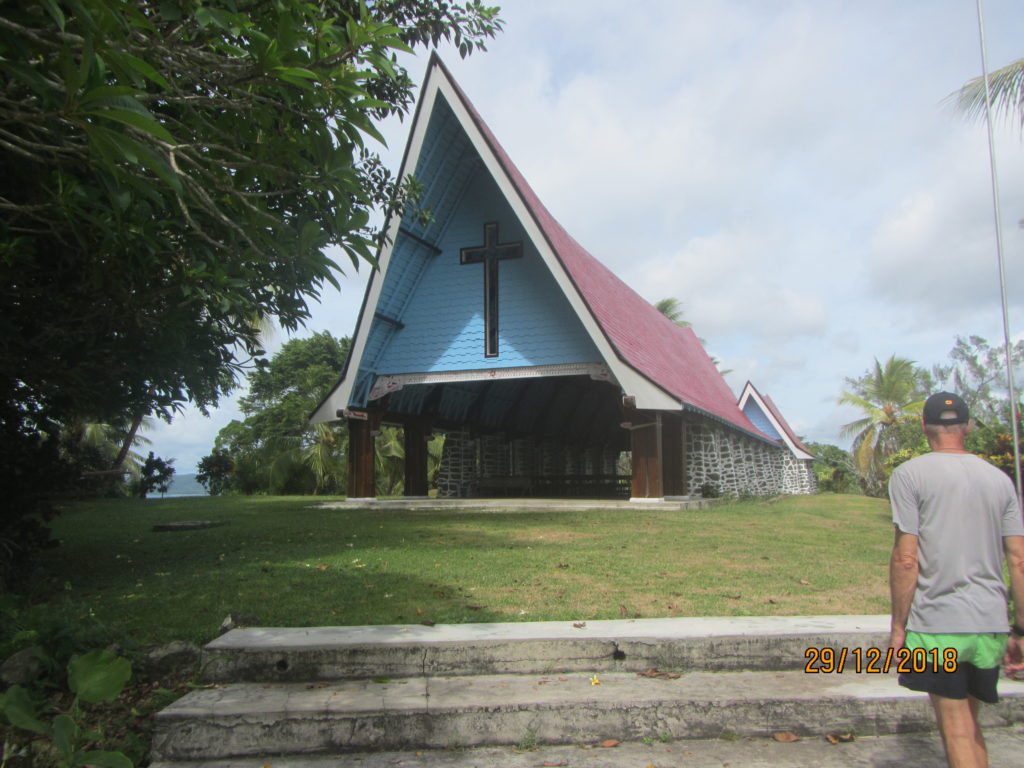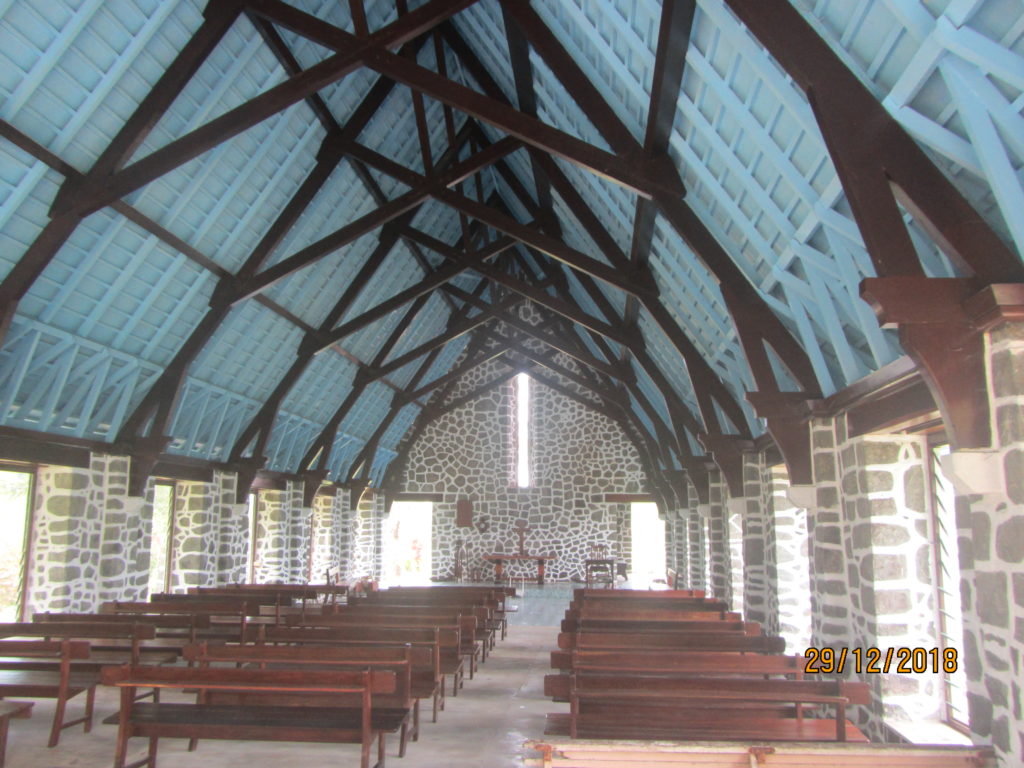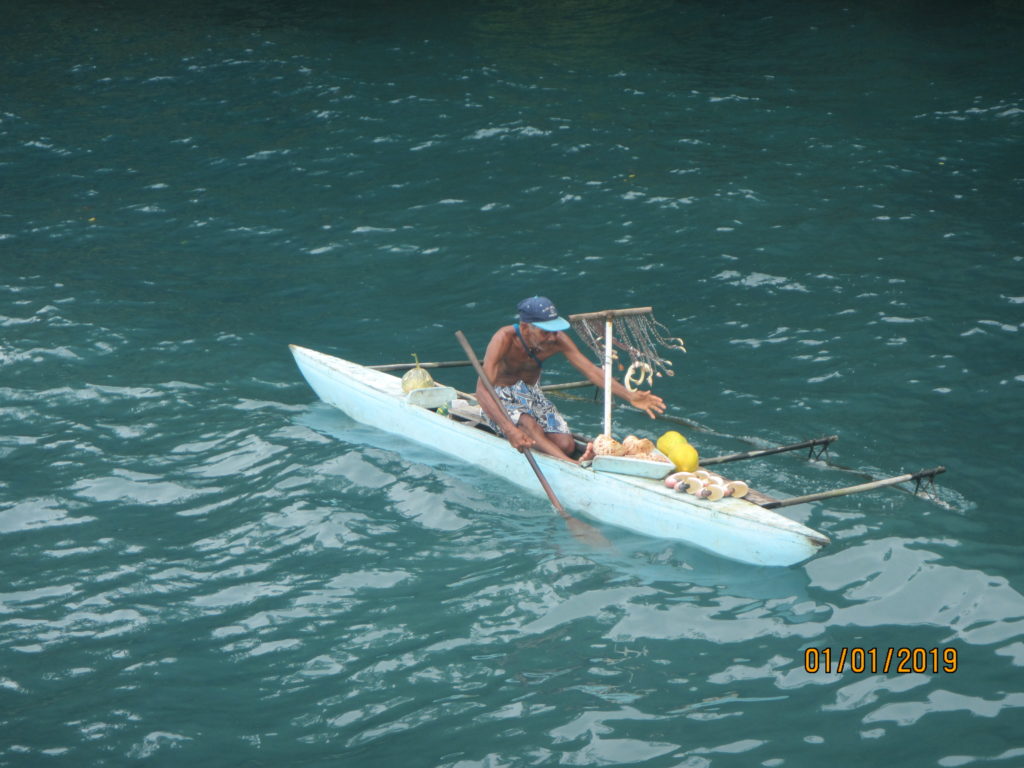As the MV Chertan pulls up at the Kwato Island jetty, a group of curious kids jostle for the best view of our back deck. The deck contains rows of wetsuits and tanks, an underwater camera table, and ten divers from the Nautilus Scuba Club whose chatter is noisier than that of the kids.
The open, innocent faces of the curly mopped kids watch our every movement. Later they dive-bomb off the jetty, a favourite activity for children in remote PNG coastal communities.

After our first critter filled dive, we tuck into yet another hearty breakfast. To occupy the surface interval between dives, my dive buddy and I take a walk through the small settlement toward the church. Our grassy track ascends between old jacarandas and giant fig trees to a high point overlooking the village. Along the way, we catch glimpses of a sunlit ocean through gaps in the canopy. A five-corner tree and the enormous figs remind me of the vegetation back home in tropical Queensland, but everything seems grander here. So many of our ancient trees have been quietly felled by local councils in Australia, one by one, the not so slow attrition of nature as we hurtle toward our cemented cityscapes.
The A framed church looks modern, but the plaque says missionaries built it in 1941.
“They were keen to get this built during the war,” says Pete.
But they did, and it looks as new and polished as it probably was on the day they finished it. Sensibly, the sides are open and partly louvred so that the worshippers can gaze across expansive ocean views and luxuriant forest canopies — a reminder of the beauty laid out by God. Its high blue roof and hand-built stone walls seem at odds with the wooden thatch-roofed houses on the beachfront some way below us, but it’s gorgeous never-the-less.

When we return, the kids have relocated to seats on top of a world-war engine that’s half rusted-away by the waterfront. Old and overtaken by nature, it’s become part of the landscape. Two of the children hold paddles as if they plan to paddle their craft across the deep green ocean only metres away. I wonder if the kids ever swim down to the motor sitting on the seafloor by their jetty, only partly disguised by coral and sponges.
We do another incredible dive, this time under and along from the jetty: ornate ghost pipefish, stonefish, and my first toadfish. Also, a range of cute blennies – from tiny ones with their faces stuck out of holes to fat rockhoppers that munch seaweed off rocks. Naturally, we’re delighted. Akiko gives the dive two stars, her highest rating. Heaps of other stuff too, and so many critters we lose track. It would take all day to try and classify them all.
